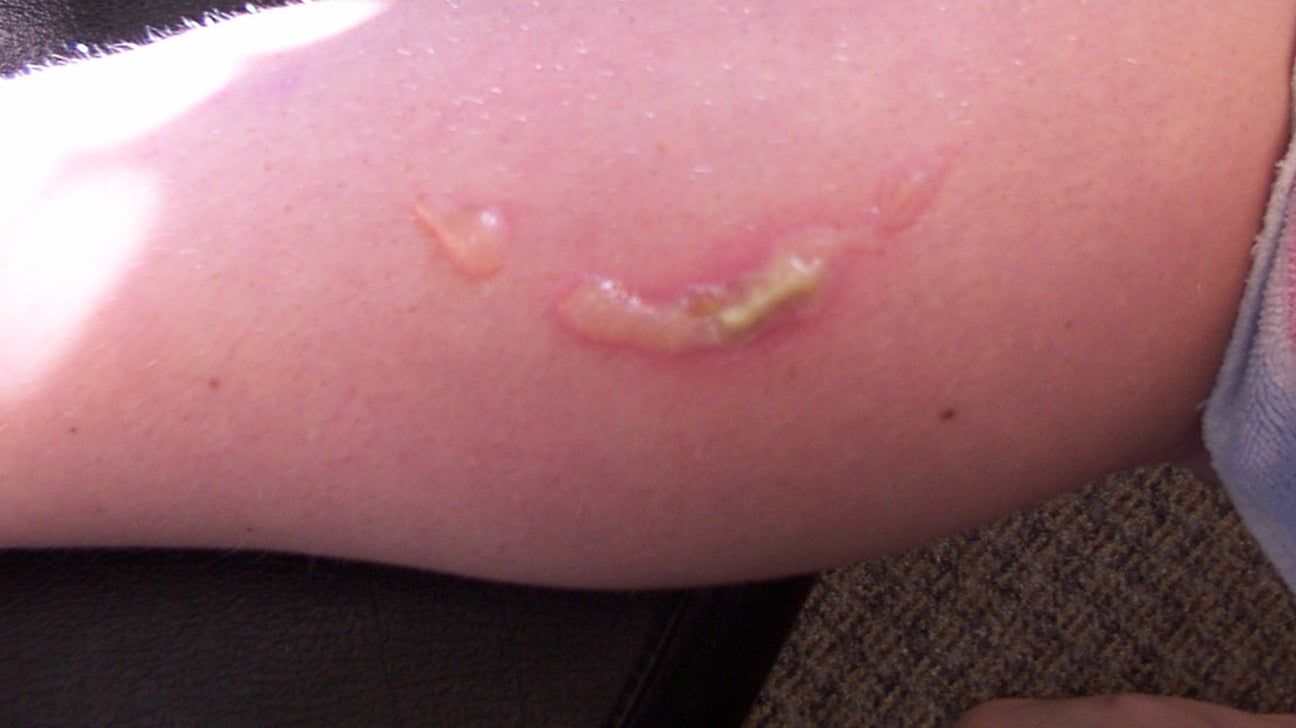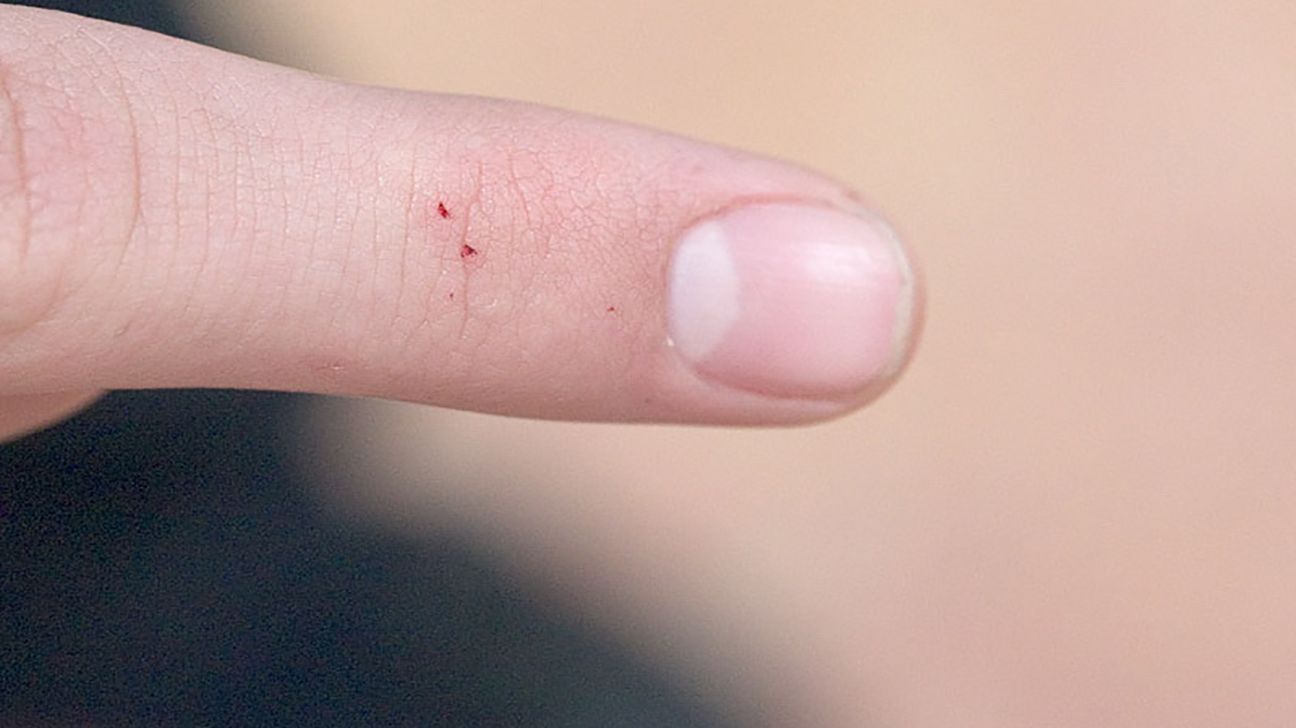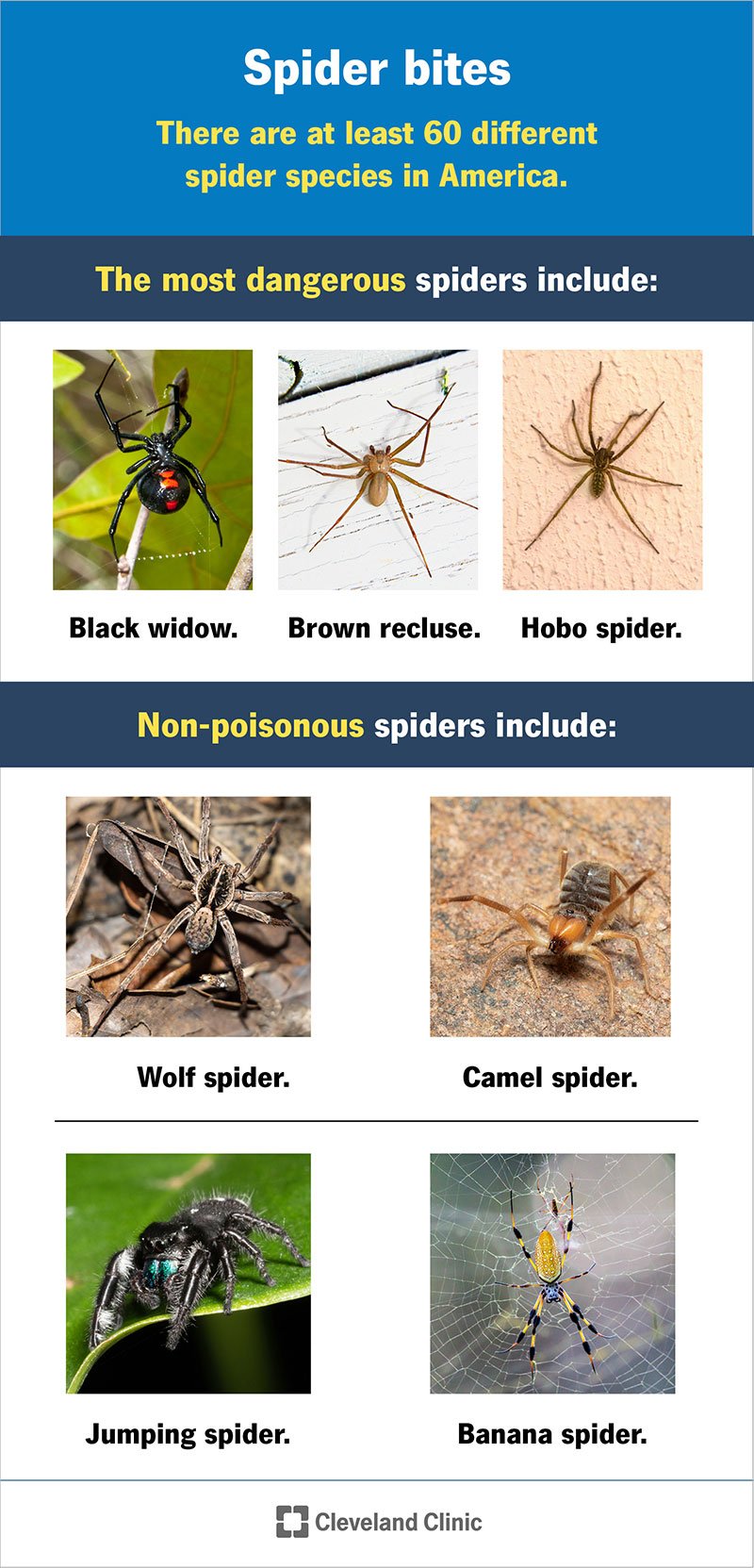If a spider bites you, wash the area with soap and water, then apply an ice pack. Seek medical attention if symptoms worsen or if the spider was venomous.
Experiencing a spider bite can be alarming, yet most cases are harmless and manageable with home care. It’s crucial to stay calm and act swiftly to mitigate any potential harm. Understanding the basic steps to take immediately after a bite can significantly reduce discomfort and prevent complications.
Identifying the spider can also be helpful, especially in regions known for venomous species. Quick and appropriate actions not only soothe the affected area but also ensure peace of mind. Remember, the key is to observe the bite site for changes and not to ignore worsening symptoms. This approach helps in addressing spider bites effectively, making them less daunting.

Credit: www.medicalnewstoday.com
Identifying A Spider Bite
Imagine feeling a sudden, sharp sting. You might suspect a spider bite. But how can you be sure? Knowing the signs is crucial for proper care. Let’s explore the common symptoms and differences from other bites.
Common Symptoms
Spider bites share similar features. Look for these signs:
- Redness at the bite site
- Swelling around the area
- A small bump or blister
- Itching or a rash
- Pain or discomfort
Severe reactions may include:
- Muscle pain or cramping
- Fever and chills
- Difficulty breathing
- Nausea or vomiting
Differences From Other Bites
Spider bites look different from other insect bites. Here’s how:
| Spider Bites | Other Bites |
|---|---|
| Typically one or two puncture marks | Often multiple bumps in clusters |
| Can have a target-like appearance | Usually uniform in shape |
| May progress to ulceration | Rarely cause skin breakdown |
Note the location and appearance of the bite. This helps in identifying the culprit. If in doubt, seek medical attention. A professional can confirm if a spider is to blame.

Credit: www.everydayhealth.com
Immediate Actions Post-bite
When a spider bites, quick action is key. The right steps can prevent infection and reduce discomfort. Follow these immediate actions to take care after a spider bite.
Cleaning The Wound
Clean the bite right away to prevent infection. Use mild soap and water to wash the area. Gently pat the skin dry with a clean cloth. Avoid scratching to reduce the risk of bacteria entering the wound.
| Step | Action |
|---|---|
| 1 | Wash hands with soap. |
| 2 | Rinse bite with cool water. |
| 3 | Use soap to clean gently. |
| 4 | Dab dry with a clean towel. |
Applying Cold Compress
A cold compress eases pain and swelling. Wrap ice in a cloth. Apply it to the bite for 10 minutes. Take a break for 10 minutes. Repeat as needed.
- Do not apply ice directly to the skin.
- Use a thin towel to wrap the ice.
- Set a timer for 10-minute intervals.
When To Seek Medical Attention
Most spider bites are harmless. Yet, some need a doctor’s care. Knowing when to seek medical attention is key. Let’s explore the signs that require a doctor’s visit.
Signs Of Allergic Reactions
- Difficulty breathing: Airway swelling may occur.
- Swelling of the face, lips, or tongue: Signs of severe allergy.
- Hives: Red, itchy welts on the skin indicate an allergic reaction.
- Dizziness: A sudden drop in blood pressure can cause fainting.
If you notice these signs, seek medical help right away.
Symptoms Of Venomous Bites
Venomous spider bites can be dangerous. Look out for these symptoms:
| Symptom | Description |
|---|---|
| Muscle pain or cramping | Severe pain around the bite, spreading to other areas. |
| Blistering | A clear sign of a venomous bite, needing care. |
| Fever and chills | Indicates the body is fighting the venom. |
| Nausea or vomiting | The body’s reaction to the toxin. |
These symptoms show a venomous bite. Do not wait. Get medical help.
Home Remedies For Relief
Got a spider bite? Don’t worry. We have some home remedies for you. These remedies can help reduce pain and swelling. Let’s explore.
Natural Anti-inflammatory Options
Some natural items can reduce swelling. They are safe and easy to use.
- Aloe Vera: Cools and calms the skin.
- Baking Soda: Make a paste with water. Apply it to the bite.
- Ice Pack: Reduces swelling. Use it for 20 minutes.
Pain Reduction Techniques
Pain from a bite can be annoying. Try these simple methods.
- Elevation: Keep the bitten area raised. This helps lessen swelling.
- Over-the-counter medicine: Ibuprofen or acetaminophen can help.
- Rest: Give your body time to heal from the bite.
| Remedy | How It Helps |
|---|---|
| Aloe Vera | Cools skin, reduces swelling |
| Baking Soda Paste | Dries out the bite, eases itching |
| Ice Pack | Limits swelling, numbs the area |
Medical Treatments Available
Medical Treatments Available for spider bites depend on the type and severity of the bite. Immediate professional medical advice is crucial, especially if you suspect a venomous spider has bitten you. Let’s explore the treatments that can help you recover from a spider bite.
Antivenom Usage
Antivenom is a treatment option for venomous spider bites. It works by neutralizing the spider’s venom. Quick administration of antivenom can reduce pain and prevent complications. Not all bites require antivenom. Doctors will decide if it is necessary for your case.
Supportive Care
Supportive care is essential for managing symptoms. This includes pain relief and treatment of allergic reactions. Doctors may prescribe medications to ease pain and swelling. In some cases, a tetanus booster is necessary. Follow your doctor’s instructions carefully to ensure a full recovery.
- Keep the bitten area clean and elevated to reduce swelling.
- Apply a cool compress to the bite site to ease pain.
- Over-the-counter pain relievers can help manage discomfort.
- Monitor the bite for changes and seek medical help if symptoms worsen.
Prevention Strategies
Let’s explore effective ways to prevent spider bites. Stay safe by avoiding encounters and wearing the right gear.
Avoiding Spider Habitats
Spiders love quiet, undisturbed areas. Know where they lurk to stay bite-free.
- Inspect your surroundings for webs or spiders.
- Clear out clutter in garages, attics, and basements.
- Shake out clothing, shoes, and bedding before use.
- Seal cracks and crevices to keep spiders out.
- Use screens on windows and doors.
Protective Clothing Recommendations
Dress wisely to shield your skin from spider bites.
- Wear long sleeves and pants in spider zones.
- Choose gloves for gardening and storage tasks.
- Select closed-toe shoes, especially outdoors.
- Tuck pants into socks in dense areas.
- Opt for light-colored clothing to spot spiders easily.
Understanding Spider Behavior
Spiders often spark fear in many people. Yet, knowing their behavior helps prevent bites. This section dives into spider habits and patterns. The aim is to help you avoid unwanted encounters.
Habits That Attract Spiders
Many homes inadvertently welcome spiders. Here are common attractors:
- Clutter: Provides hiding spots.
- Insects: They are spider food.
- Dark corners: Ideal for web-building.
- Moisture: Spiders need it to survive.
To make your home less inviting, reduce these attractors.
Seasonal Activity Patterns
Spiders are more active at certain times. Here’s a brief overview:
| Season | Spider Activity |
|---|---|
| Spring | Emerging from hiding. |
| Summer | Peak in hunting. |
| Fall | Looking for warmth. |
| Winter | Less visible, but indoors. |
Be vigilant during these peak times to avoid bites.
Educating Yourself About Spiders
Understanding spiders is key to handling bites properly. Knowledge can reduce fear and provide the right steps to take.
Differentiating Venomous From Non-venomous
Most spiders are harmless. Identifying venomous ones is crucial. Learn the visual traits that set them apart. Look for distinctive markings, color patterns, and body shapes. Remember, a spider’s aggression doesn’t always match its venom potency. Bold the color, markings, and size when researching.
Learning About Local Spider Species
Know the spiders in your area. Use guides or websites for local species. This knowledge can help you identify spiders quickly and react correctly. Create a simple table or list of local spiders, noting which are venomous. Use images to match spiders you might encounter.
| Spider Name | Image | Is it venomous? |
|---|---|---|
| Black Widow |  | Yes |
| House Spider |  | No |
Keep this information accessible. It can be a lifesaver in an unexpected situation.

Credit: www.healthline.com
Frequently Asked Questions
Are All Spider Bites Dangerous?
No, most spider bites are not dangerous and often cause minor symptoms. However, bites from species like black widows or brown recluses can be serious and require medical attention.
How Do You Identify A Spider Bite?
Spider bites are identified by two puncture marks. Redness, swelling, and pain may accompany. Bites from venomous spiders may also show blisters, rash, or muscle pain.
What Immediate Steps Should You Take After A Spider Bite?
Clean the bite area with soap and water. Apply a cold compress to reduce swelling. Elevate the bitten limb and avoid moving too much to prevent spreading venom.
When Should You See A Doctor For A Spider Bite?
Seek medical help if you experience severe pain, abdominal cramping, difficulty breathing, or a spreading rash after a spider bite, especially if you suspect it’s from a venomous spider.
Conclusion
Navigating spider bites can be daunting, but with the right steps, you can manage them effectively. Remember to keep calm, seek medical attention if symptoms escalate, and monitor the bite area closely. Armed with this knowledge, you’re better prepared to handle such unexpected encounters.
Stay safe and informed, and consider sharing this guide to help others.
Related posts:

I’m MD Tanvir, and I bring years of expertise gained from working closely with pest control companies to the forefront. My journey in the industry has inspired me to launch Bug Battler, a platform aimed at equipping people with the know-how to combat pests autonomously. Through Bug Battler, I aim to empower individuals with practical insights to tackle pest infestations effectively.

